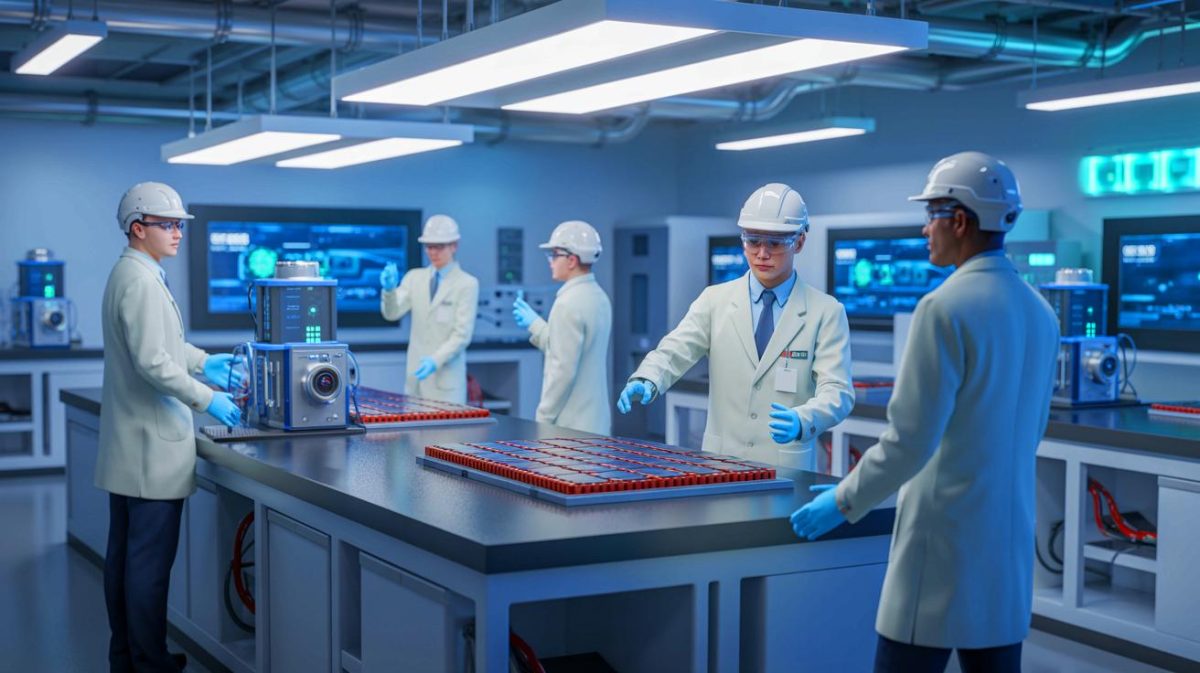| IN A NUTSHELL |
|
The dawn of a new era in battery technology is upon us, heralded by the collaboration between Japanese chemical giant Zeon Corporation and Taiwanese tech innovator Sino Applied Technology (SiAT). With a bold investment of USD 20 million, these industry leaders are set to revolutionize the electric vehicle (EV) landscape and beyond. Their focus? An advanced single-walled carbon nanotube (SWCNT) conductive paste, promising to supercharge lithium-ion batteries with unprecedented efficiency and durability. This partnership not only promises to meet the surging global demand for better batteries but also marks a significant stride towards a sustainable energy future.
A Battery Tech Revolution
The initiative between Zeon Corporation and SiAT comes as a strategic response to the skyrocketing demand for lithium-ion (Li-ion) batteries, anticipated to grow by an astounding 33 percent each year. By the decade’s end, this demand is projected to reach an impressive 4.7 Gigawatt hours (GWh). The driving forces behind this surge include the rapid rise of electric mobility solutions and the burgeoning development of smart energy infrastructure. In such a climate, the need for materials that outshine traditional conductors like carbon black and multi-walled carbon nanotubes becomes increasingly critical.
Enter the realm of SWCNTs, a groundbreaking material that Zeon and SiAT have leveraged to enhance battery performance. Even in minimal quantities, SWCNTs dramatically boost energy density and cycle life, particularly in challenging applications such as silicon anodes. However, mass production of SWCNTs is fraught with challenges, primarily due to the complex high-temperature chemical vapor deposition (CVD) process required. This intricate procedure demands meticulous catalyst control and reaction fine-tuning to achieve the desired purity and performance.
Yet, Zeon has paved the way for overcoming these hurdles, becoming the world’s first company to master large-scale SWCNT production in 2015. Utilizing their proprietary Super Growth technology, Zeon developed Zeonano—an SWCNT product lauded for its exceptional aspect ratio, purity, and surface area. This technological feat has positioned Zeon at the forefront of battery innovation, setting the stage for unprecedented advancements in energy storage solutions.
Advanced Nanotube Solutions
Despite the promising potential of SWCNTs, dispersing these nanotubes uniformly within battery slurries has long posed a significant challenge. The natural tendency of nanotubes to agglomerate has historically limited their commercial viability. However, SiAT, with over two decades of expertise in nanomaterial engineering, has developed proprietary methods to overcome this dispersion challenge, creating stable, high-performance conductive pastes.
The partnership between Zeon and SiAT has yielded two distinct types of conductive pastes: LSC2102, which is N-Methyl-2-pyrrolidone-based, and LSC1101, which is water-based. These pastes have been rigorously tested with battery manufacturers, demonstrating remarkable improvements in both battery output and longevity. With the recent investment, SiAT plans to scale up production, aiming to reach an annual output of 25,000 tons by 2030.
In this collaborative endeavor, Zeon will serve as the primary supplier of raw SWCNT material, while both companies work to expand SWCNT applications beyond batteries. Their vision encompasses fields such as conductive rubbers, thermal composites, and structural materials, all while championing environmental sustainability and technological progress.
The Future of Energy Storage
This joint venture is not just about producing better batteries; it’s about redefining the future of energy storage. As the world shifts towards greener technologies, the demand for lightweight, efficient, and durable power sources becomes paramount. The SWCNT conductive paste developed by Zeon and SiAT stands to play a crucial role in this transformation, offering a solution that balances performance with sustainability.
With EVs, drones, AI servers, and energy storage systems on the cusp of a new technological era, the implications of this advancement are profound. The enhanced capabilities of these systems could lead to longer-lasting devices, reduced environmental impact, and accelerated adoption of clean energy technologies. The Zeon-SiAT partnership is poised to be a catalyst for this change, setting a new standard for what is possible in energy storage.
Challenges and Opportunities
The journey to realizing the full potential of SWCNTs is not without its challenges. Scaling production while maintaining quality and performance standards requires significant investment and innovation. However, the rewards are equally significant, with opportunities to revolutionize multiple industries and contribute to a sustainable future. The successful development and deployment of SWCNT-based technologies could usher in a new era of energy solutions, where efficiency and sustainability are no longer mutually exclusive.
As Zeon and SiAT continue to push the boundaries of what’s possible, they invite other industry players to join them in this quest. The path forward is filled with possibilities, from enhancing existing technologies to pioneering new applications. The question remains: How will this breakthrough in SWCNT technology reshape the landscape of energy storage and beyond?
Did you like it? 4.3/5 (24)









Wow, this sounds like a game-changer for electric vehicles! 🚗⚡